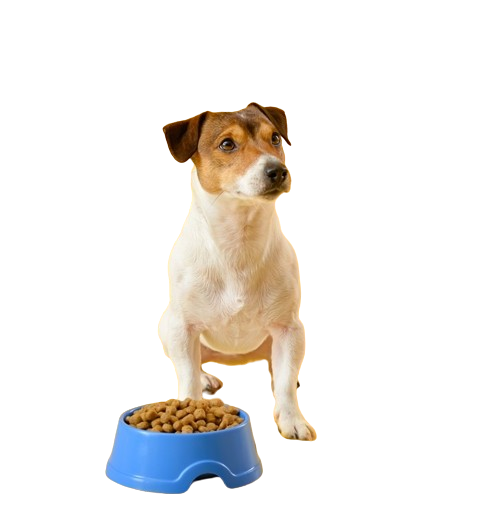Yes, it is safe for dogs to enjoy a juicy peach in moderation. Sweet Peaches are a healthy snack for dogs as long as they are given in small amounts and the peach pits is removed. The fruit can provide vitamins and fiber for your pet, but too much can cause an upset stomach.
When it comes to our precious pets, understanding what’s safe for their diet is paramount. For a fruit as beloved as the peach, the question “Can dogs eat peaches?” is one that often arises. This blog post addresses the safety and benefits of yellow peaches for our canine companions and provides a comprehensive guide to responsibly including peaches in a dog’s diet.
Is It Safe for Dogs to Eat Peaches?
Before you offer your pup a slice of this perfect summer treat, it’s important to note that not all parts of the peach are considered safe for dogs. The flesh of the peach is mostly safe, but there are crucial safety concerns associated with the pit and the peach fuzz that all dog owners should be aware of.
Addressing Main Safety Concerns
The pit of the peach poses a serious choking hazard and, if ingested, can obstruct the digestive system. Peach fuzz, while generally not harmful, can irritate a dog’s stomach or intestines if eaten in large amounts.
Nutritional Value of Peaches for Dogs
In human foods Peaches are not just a delicious treat for humans; they also offer some nutritional benefits for dogs. The fruit is a good source of vitamins A and C, along with fiber and antioxidants, which can promote a healthy immune system and aid digestion.
Vitamins and Minerals Found in Peaches
A single cup of peaches contains approximately 10% of a dog’s daily fiber requirement and is rich in beta-carotene, a form of vitamin A essential for good vision and immune support. Vitamin C in peaches can aid in wound healing and iron absorption.
Potential Health Benefits
The antioxidants in peaches can help neutralize free radicals, potentially reducing the risk of chronic diseases. The fiber content can also support gastrointestinal health by regulating digestion.
When it comes to the specific nutritional health benefits of peaches for dogs, here is a breakdown:
As shown in the table above, peaches are a valuable source of important nutrients that can positively impact a dog’s well-being. However, it’s important to remember that moderation is key. While peaches offer numerous benefits, they should still be incorporated into a balanced diet alongside other appropriate foods for dogs.
Different Forms of Peaches and Their Suitability for Dogs
How peaches are prepared can greatly affect their safety for dogs. Here’s a look at various forms of peaches and how suitable they are for canine consumption.
Raw Peaches: Pros and Cons
Feeding a dog a small amount of raw peeled peach is generally safe and can be an enjoyable way to share a sweet snack. However, be cautious of the pit and avoid feeding peach seeds.
Grilled Peaches: Safety Precautions
Grilling peaches can reduce the risk of peach fuzz irritation and make the peach flesh softer and safer for dogs to eat. Always cool the fruit down to a dog-safe temperature before offering it to your pet.
Peach Yogurt: Risks and Benefits
Yogurt can be a suitable treat for dogs in moderation, and adding a few peach slices can introduce a new and tasty flavor. Ensure the yogurt is plain, as sugars and other additives could be harmful for dogs.
Peach Sorbet or Ice Cream: Alternatives to Consider
While a delicious ice cream frozen peach treat can be a welcome joy on a hot day, be cautious of the sugar content and potential lactose intolerance in dogs. Opt for homemade recipes with dog-friendly ingredients or explore commercial products designed specifically for pets.
Handling Peach Pit Poisoning
The peach pit is perhaps the most hazardous part of the fruit for dogs. Here’s what you need to know about avoiding and handling peach pit poisoning.
Understanding the Dangers of Peach toxic Pits
The hard pit, or stone, inside the peach contains amygdalin, which can release cyanide when metabolized. Symptoms of cyanide poisoning in dogs can include difficulty breathing, dilated pupils, and collapse.
Signs of Peach Pits Poisoning in Dogs
If your dog has ingested peach pits, watch for signs of distress, including drooling, vomiting, difficulty breathing, and abdominal pain. If symptoms are severe, seek immediate veterinary care.
Immediate Steps to Take in Case of Ingestion
If you suspect your dog has eaten a peach pit, contact your veterinarian or an animal poison control hotline. They may suggest inducing vomiting or other treatments, depending on the situation.
Exploring Various Peach Products and Their Impact on Dogs
Peaches come in different forms, and each requires specific precautions when giving them to dogs.
Canned Peaches: Considerations for Consumption
Canned peaches are often high in sugar and may also contain additional ingredients that are not safe for dogs. Choose canned peaches in natural juice or water with no added sugars or artificial sweeteners, and feed sparingly. Read labels before giving Processed Peach products to your dog.
Frozen Peaches: Safe Handling Tips
Frozen peaches can make for a refreshing and suitable dog treat if handled carefully. Thaw them properly and cut into manageable pieces to reduce the possible risks of choking.
How Many Peaches Can Dogs Safely Eat?
The quantity of peaches a dog can safely consume depends on their size, digestive health, and any dietary restrictions. As a rule of thumb, treats should not exceed 10% of a dog’s daily caloric intake. For delicious peach treat, moderation is key.
Safe Ways to Incorporate Peaches into Your Dog’s Diet
There are safe and delightful ways to include peaches in your dog’s diet. Here are some tips for responsible feeding.
Tips for Safely Feeding Peaches
Always wash peaches before serving them to remove pesticide residue and dirt that could upset a dog’s stomach. Feed small amounts peaches pieces, and observe your dog for any unusual reactions.
Creative Ways to Serve Peaches to Dogs
Enhance your dog’s dining experience with these creative peach serving suggestions:
Peach Food Topper
Chop up a few pieces of peach as a tasty natural topper for your dog’s regular meal.
Peach Fruit Smoothie
Blend fresh peaches with other dogsafe fruits such as bananas and strawberries to create a nutritious smoothie. fresh peaches are great for dogs
Peach Yogurt or Frozen Yogurt
Mix small amounts of unsweetened yogurt or frozen yogurt with peach pieces for a cold, creamy summer snack.
Stuffed KONG Toy with Peaches
Combine peaches with other treats and seal them in a KONG toy for a satisfying and engaging puzzle treat.
Dehydrated Peaches as Treats
Dehydrate peach slices to create chewy, long-lasting treats perfect for rewarding good behavior.
Potential Risks and Concerns with Peaches for Dogs
While peaches can be a beneficial addition to a dog’s diet, there are potential risks and concerns to be cautious of.
Addressing Potential Hazards
Be aware of possible allergic reactions in dogs, which can manifest as itching, swelling, or gastrointestinal issues. Pay attention to the peach’s origin, as peaches with pesticides or other chemicals may be harmful to dogs.
How to Safely Give Peaches to Dogs
Offer small peach pieces as an occasional treat. Never force a dog to eat a peach, and if they don’t show interest, consider another type of nutritious treat.
Safe Ways to Serve organic Peaches to Dogs
When serving peaches to dogs, it’s important to prioritize their safety. By following a few simple steps, you can ensure that your furry friend can enjoy this delicious fruit without any risks.
- Wash the peaches: Begin by thoroughly washing the peaches to remove any dirt or pesticides that may be present on the healthy skin. This step is crucial to ensure that your dog isn’t exposed to any harmful substances like peach skin.
- Remove the pit and leaves: Next, carefully remove the pit from the peach. The pit contains amygdalin, a sugar-cyanide compound that can be toxic to dogs. Remember to also remove any leaves attached to the fruit, as they may contain cyanide as well.
- Cut into bite-sized pieces: To minimize the risk of choking, it’s best to cut the peach into small, bite-sized pieces. This will make it easier for your dog to eat and digest the fruit safely.
- Consult your veterinarian for serving size: The appropriate serving size of peaches for dogs can vary depending on their size and individual needs. It’s always a good idea to consult with your veterinarian to determine the right amount for your pet.
- Monitor for adverse reactions: As with any new food introduced to your dog’s diet, it’s important to monitor them for any adverse reactions. Keep an eye out for any signs of upset stomach or diarrhea that may indicate an intolerance or sensitivity to peaches.
Conclusion
Feeding peaches to your dog can be a fun way to share a safe and healthy snack — as long as you take the necessary precautions.
Remember, the pit and peach fuzz are off-limits. Stick to the flesh, and always watch for any adverse reactions.
Moderation is the golden rule when it comes to any treat, including peaches.
With this in mind, enjoy the bonding experience of sharing a peach with your pup in a responsible and enjoyable way.
Veterinary Guidelines for Treating Peach-related Issues in Dogs
In case your dog does experience peach-related health issues, it’s important to know where the closest veterinary facility is and how to contact an animal poison control hotline.
Always consult a veterinarian for personalized advice regarding your dog’s diet and health.
FAQs about Can Dogs Eat Peaches
Yes, dogs can eat peaches, but certain precautions and considerations should be taken.
Peaches can be safe for dogs to eat, but it’s important to remove the pit and avoid canned or preserved peaches that may contain additives or high sugar content.
Peaches provide beneficial nutrients such as vitamin A and fiber for dogs.
It’s recommended to wash the peaches thoroughly, remove the pit and any leaves, and cut the fruit into small, bite-sized pieces.
Yes, it’s always a good idea to consult with a veterinarian before introducing any new food to your dog’s diet. They can provide specific guidelines based on your dog’s individual needs.
Peaches are not necessary for a dog’s diet and should be given to them as an occasional treat in moderation.
The biggest concern with peaches is the pit, which contains a sugar-cyanide compound called amygdalin. The pit can pose a choking hazard, potential intestinal blockages, or irritation to the esophagus and intestines.
It’s best to wait until puppies have a fully developed digestive system before introducing them to new foods like peaches. Consult with your veterinarian for guidance.
Frozen peaches can be a refreshing and safe treat for dogs, but remember to remove the pit and serve them in small, manageable pieces.
Some other safe fruits for dogs include apples, blueberries, and watermelon. Always research and ensure that the fruit is safe for your dogs before feeding it to them.
Source Links











